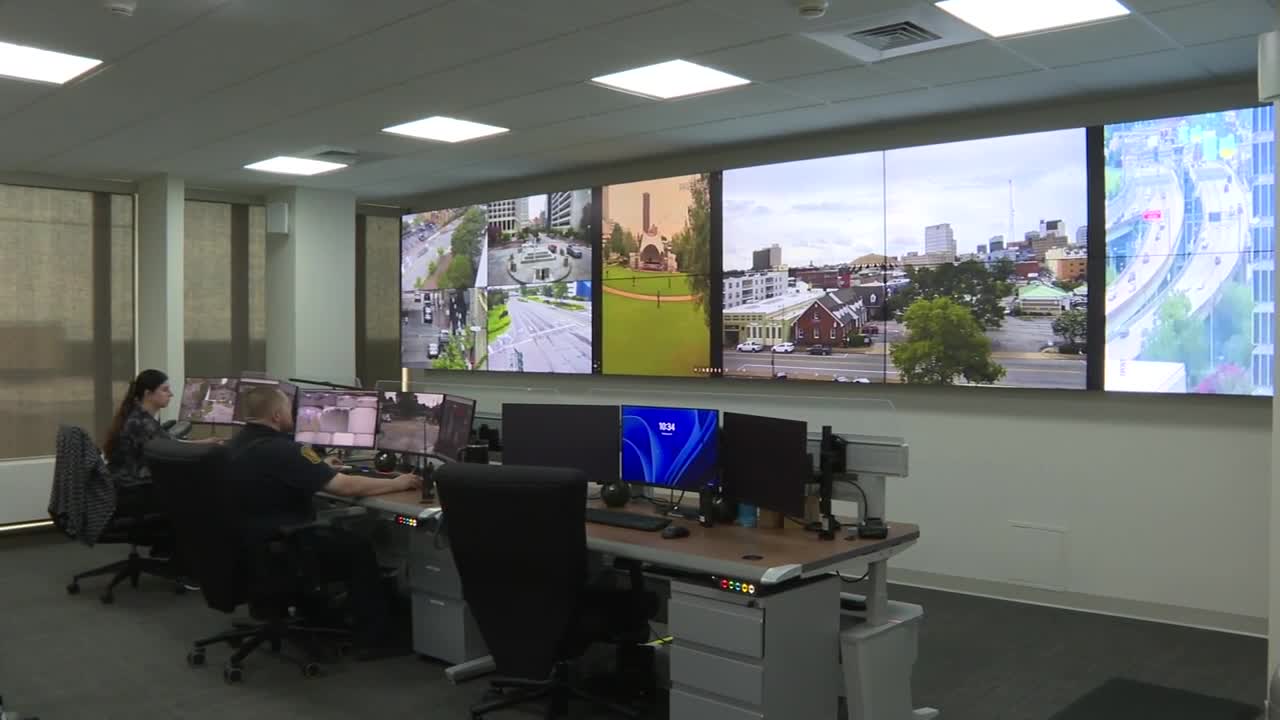NORFOLK, Va. — More than a year after opening, Norfolk’s Real-Time Crime Center (RTCC) is showing results, according to police leadership.
From helping track down suspects in shootings to locating missing people, officials say the center is already playing a critical role in day-to-day public safety.
The Real-Time Crime Center is not a 911 dispatch center, but it is closely connected to police response.
Inside the facility, which is located in an undisclosed area of downtown Norfolk, civilian analysts and sworn officers monitor live video, comb through databases and assist patrol units and investigators in real-time.
“So it's different from a 911 center in that we're not necessarily dispatching officers to calls for service,” said Capt. Mike Thomas, who oversees the center as head of the Norfolk Police Department’s Strategic Intelligence Division. “What we're looking to do is listen for calls for service that are going out and provide officers with real-time information as they're arriving on scene, and also providing officers and investigators with evidence after an incident has occurred.”
The center launched in May 2024 and operates 20 hours a day, seven days a week. Each shift includes two civilian analysts and one sworn officer.
Thomas says the team is using camera networks, license plate readers and records systems to identify suspects quickly and, in some cases, prevent further violence.
“Prior to the establishment of [the] Real-Time Crime Center, we... essentially had no video assets available to the police department to assist with crimes that we had access to that was readily available,” he said. “And it's helped us solve numerous crimes, to include multiple homicides, malicious woundings, you know, which include shootings, find[ing] missing people, things like that.”
Thomas told News 3's Jay Greene the technology allows analysts to spot key evidence, especially in situations where witness information is limited or unreliable.
“There’s been multiple cases where witnesses didn't really have a whole lot of information about, you know, who a shooter might have been, or what kind of car they were in,” he said. “The analysts here in the Real-Time Crime Center were able to locate vehicles and suspects through video, provide that information to investigators who were able to follow up on it and then make an identification and an arrest very quickly.”
That speed, he said, is especially important in Norfolk, where retaliatory gun violence can escalate quickly if suspects are not identified and arrested.
“So not only are we removing violent offenders from the street quickly, we're able to mitigate retaliation very quickly as well,” Thomas said. “We're understanding what's happening on scene, as opposed to relying on witnesses who may have a vague recollection of what actually happened.”
He added that in fast-moving emergencies—like shootings—the RTCC can direct officers safely through scenes and help track suspects or witnesses who flee.
“If a call for service goes out for a gunshot victim while officers are en route, investigators are also en route,” he said. “Real-Time Crime Center analysts are able to... tell them what's going on on the scene.”
Future vision includes regional collaboration
Currently, most of the video assets monitored by the RTCC are owned and operated by the City of Norfolk. Contrary to common belief, police do not have direct access to residential Ring cameras or private security footage without agreements in place.
“Ring cameras are a closed-loop system. We don't have access to that,” Thomas said.
He noted that Norfolk does share footage with Virginia Beach in limited cases, but only when the video comes from city-owned infrastructure, not private businesses or donors.
“That donor site or private entity has signed an MOU with the City of Norfolk and nobody else,” Thomas said. “But if it is a video asset that the police department owns, then we share that with the City of Virginia Beach and vice versa.”
Looking ahead, Norfolk Police hopes to build stronger regional ties in the coming years. Thomas said a more unified system between cities could help address cross-jurisdictional crime more effectively.
“The better data sharing we can have regionally means a safer region for the citizens here in Hampton Roads,” he said. “So ultimately, that's a place where we would like to get to is being able to provide the most amount of public safety, as well as the feeling of safety...in Hampton Roads, not just here.”





